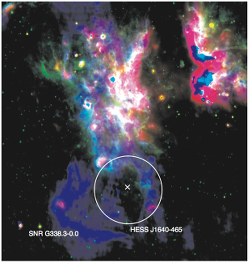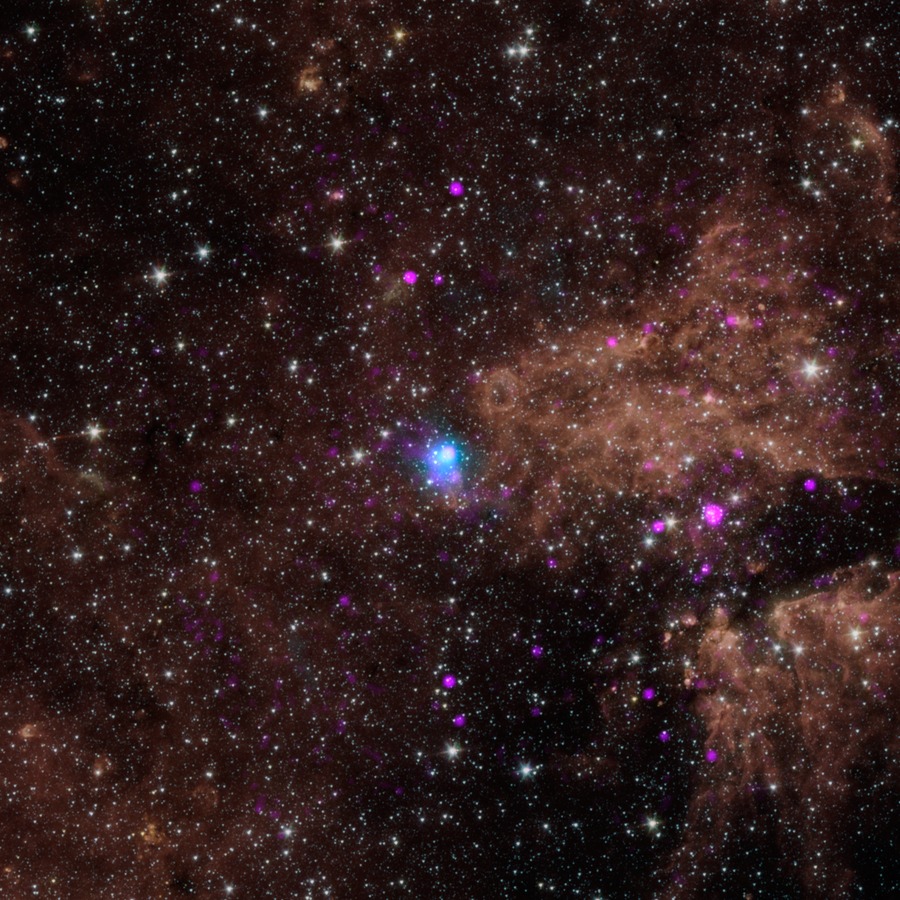 HEAPOW: Taking the Pulse of the Dead (2014 Sep 22)
HEAPOW: Taking the Pulse of the Dead (2014 Sep 22)
Physicists use particle accelerators, or "atom-smashers" to understand nature on the smallest scales. But natural particle accelerators can be many times more powerful than the most powerful accelerator ever built on earth. The locations of these cosmic accelerators have been identified by so-called tera-electron volt observatories, like H.E.S.S., VERITAS and MAGIC. These telescopes work by detecting the effects of enormously energetic photons produced by these extraordinary cosmic accelerators on the very atmosphere of the Earth. These telescopes, along with the Fermi Gamma-ray Space Telescope, has helped detect sites of high energy particle acceleration. Many of these sources have been identified as being associated with pulsars, rapidly spinning neutron stars, the dead remnants of exploded stars. But some of these sources remain a mystery. Now, thanks to the NuSTAR space observatory, one mystery has been resolved. This mysterious object, known as HESS J1640-465, was identified as a source of very high energy gamma-ray radiation. This source was associated with a supernova remnant, as shown in the composite radio and infrared image above, but the connection between this TEV source and the supernova remnant was not clear. Observations with the XMM-Newton and Chandra X-ray Observatory hinted that the source was possibly a powerful neutron star. But the final nail in the coffin, so to speak, was provided by NuSTAR. NuSTAR, with its capabiity to make images at energies eight times higher than either Chandra or XMM, was able to peer through the murk in front of the H.E.S.S. source, and to reveal the pulsar at its heart.
HESS J1640−465 – an exceptionally luminous TeV gamma-ray supernova remnant
HESS J1640-465 - an exceptionally luminous TeV gamma-ray supernova remnant - H.E.S.S. Collaboration
- Monthly Notices of the RAS 439(3) 2828 (2014 Apr 11) DOI: 10.1093/mnras/stu139
arXiv.org > astro-ph > arXiv:1401.4388 > 17 Jan 2014 (v1), 11 Feb 2014 (v2)
NuSTAR: Pulse of a Dead Star Powers Intense Gamma Rays
NuSTAR Discovery of a Young, Energetic Pulsar Associated with the Luminous Gamma-ray Source HESS J1640-465 - E. V. Gotthelf et al
- Astrophysical Journal 788(2) 155 (2014 Jun 20) DOI: 10.1088/0004-637X/788/2/155
arXiv.org > astro-ph > arXiv:1405.0465 > 02 May 2014
| << Previous HEAPOW | High Energy Astrophysics Picture of the Week | Next HEAPOW >> |
